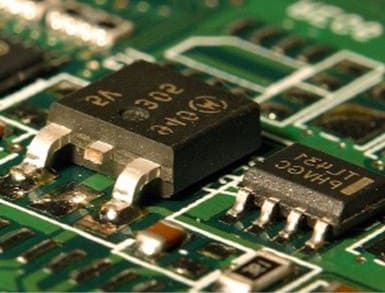
Over the years, the semiconductor has entered all aspects of our lives. To understand the penetration of these semiconductor integrated chips (ICs), all we need to do is look around – a manufactured car contains over 1000 ICs. Our smartphones have 15-20 ICs embedded in them.This important manufacturing component recently featured in headlines for a shortage in supply. It brought down the manufacturing capacity of automobile companies in India. Similar events happened in different countries across the world. The COVID-19 pandemic has disrupted global semiconductor supply chains. It has forced countries to promote the manufacturing of semiconductors within their geographical bound- aries. The Indian government too came up with a policy under the Aatmanirbhar Bharat Yojana and the ‘Make in India’ scheme. Today, East Asia is the largest manufacturer of semiconductor chips in the world and is home to many semiconductor manufacturing factories. These factories are known as ‘fabs’. India’s Tryst With Semiconductors: From 1960s to Present Fairchild, an American semiconductor manufacturer, considered setting up a fab in India in the 1960s. However, the company couldn’t enter the Indian market, due to red-tapism. As the semiconductor technology improved in the late 70s and 80s, India decided to manufacture semiconductor ICs at home. The government set up a wholly state-owned enterprise called Semi-Conductor Laboratory (SCL). SCL was set up in Mohali, Punjab in 1984. The decision seemed prudent, considering the growing electronics market in Punjab in the 80s. The Indian government invested $40-70 million to make it a success.However, the company soon ran into financial troubles. As funds dried up, the talent working in the company looked for greener pastures. The manufacturing activities came to a halt at SCL after a fire accident in 1989. Now, the role of SCL is limited to research and development (R&D). It has helped India grow into a hub for semiconductor design. Companies in India design the ICs and the fabs in East Asia manufacture them. While India’s manufacturing ambitions were put to a halt, companies from Taiwan, China, Japan and South Korea became global semiconductor manufacturers. Due to the lack of manufacturing capacity, India imported 100% of its ICs from the countries in the ASEAN and China. In 2020, India imported chips worth $15 billion. Thirty seven percent of these chips were manufactured in China.Successive governments attempted to revive semiconductor manufacturing in the country, but in vain. Companies were invited to man- ufacture in India and the government considered reducing their stake in SCL. They bore no fruit. Interested companies, such as Israeli chipmaker Tower Semiconductor, faced bureaucratic hurdles. After seven years of trying to enter the Indian market, the company asked for Prime Minister Narendra Modi’s intervention to fast-track the proposal for chip manufacturing. At the same time, the Indian automobile industry was suffering from a shortage of semiconductors. To ensure manufacturing in India does not suffer from disruption of global supply chains, the government approved a $10 billion (Rs 76,000 crore) Production Linked Incentive (PLI) scheme to attract semiconductor manufacturers. Post the announcement of the scheme, the government received proposals worth $20.5 billion from five companies, including Tower Semiconductor, Foxconn, and TSMC. However, the fabs are yet to take off. India is once again poised to become a manufacturing hub for semiconductors, with companies lining up. The success, however, will be measured by the actual manufacturing capacity developed in India in the near future.
10 May 2022
Vijayhardik Josyula